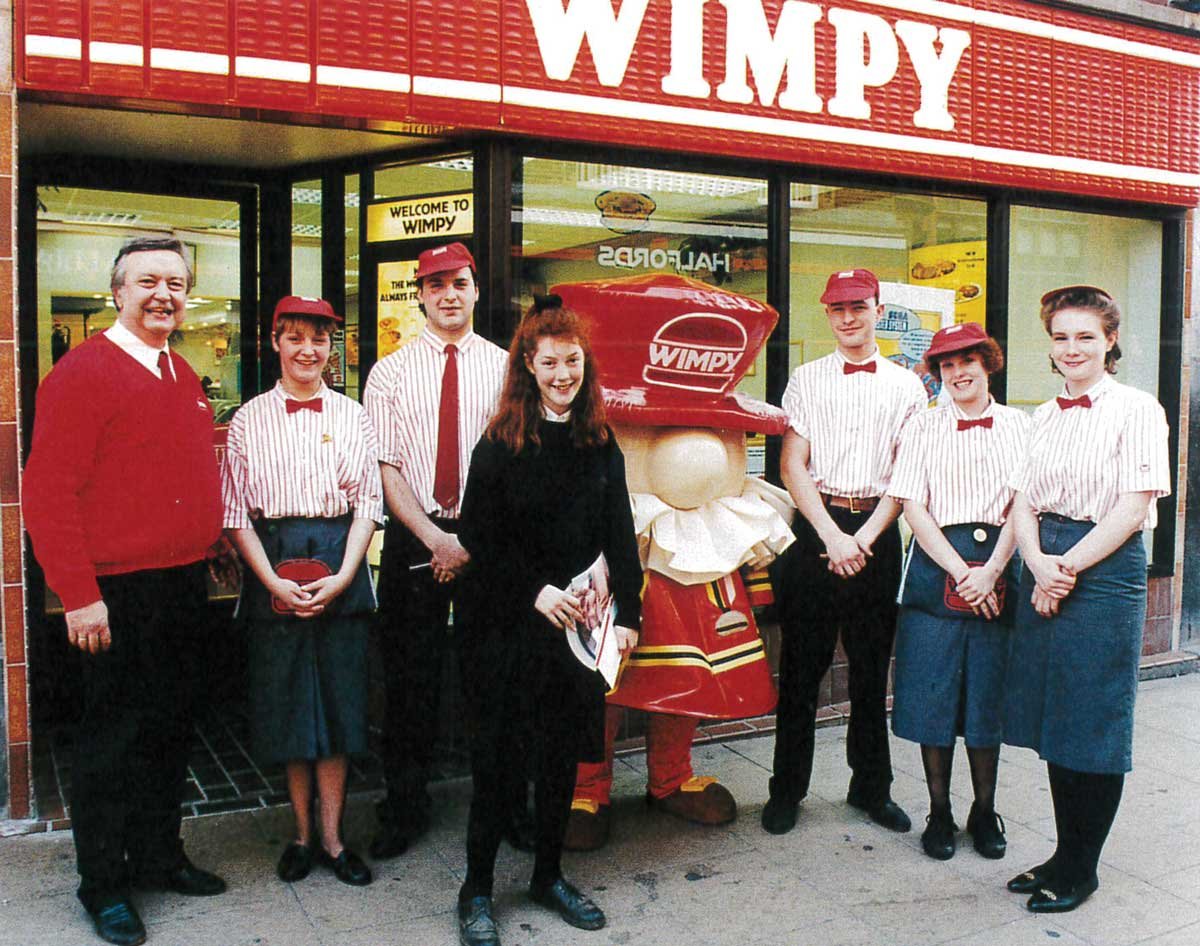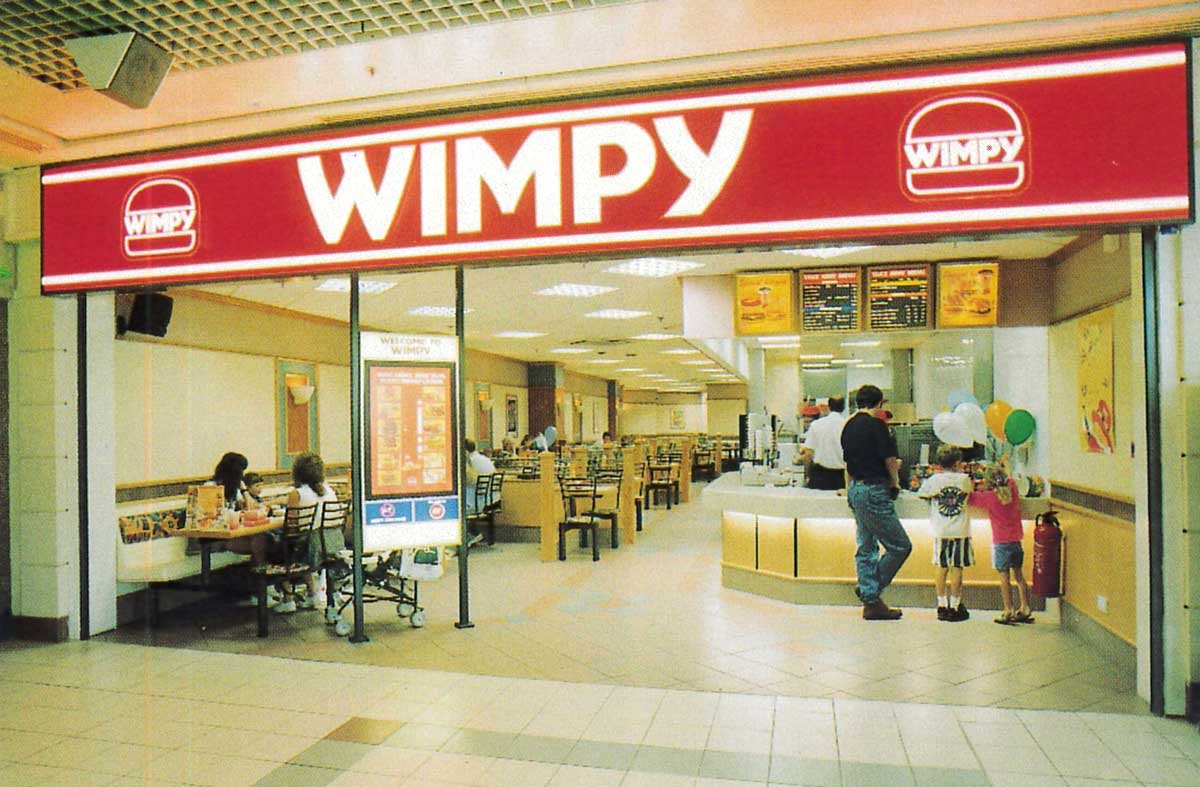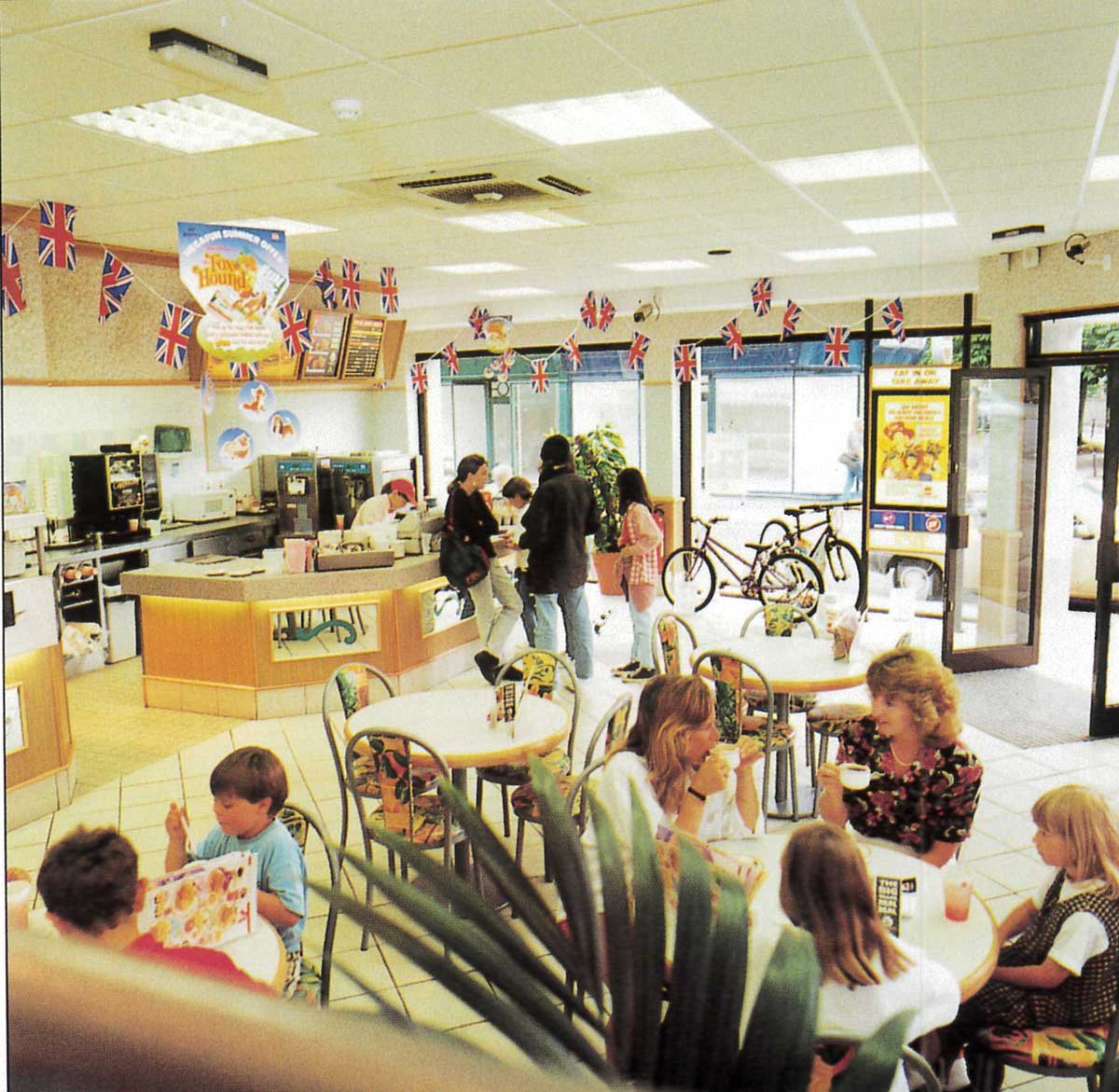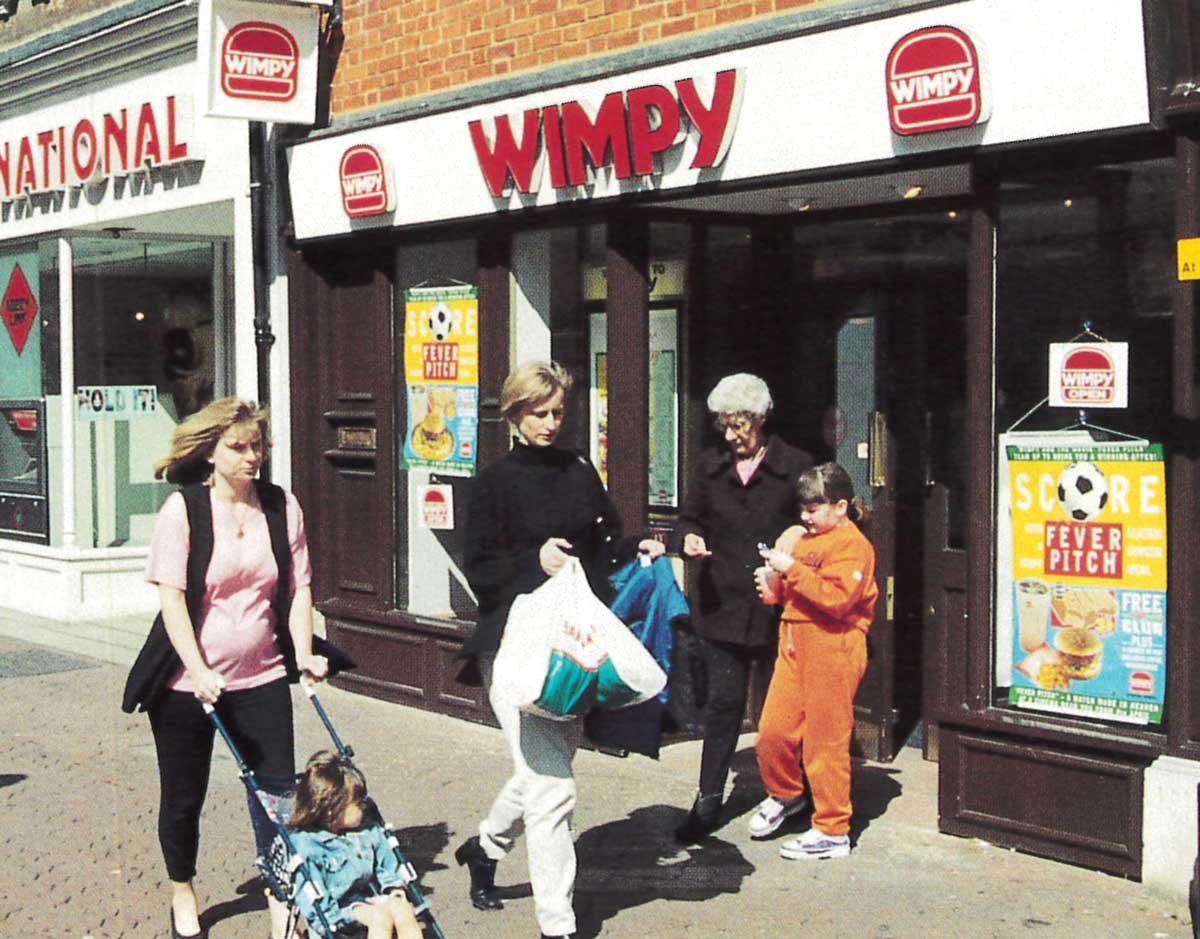WHERE'S WIMPY? Nostalgia & Fries
We love our independents at ‘cene, but we needed to talk about Wimpy, writes Joe Bill
It’s fair to say that the UK high street is a very different place now compared with even just a couple of years ago. Since the turn of the millennium we have seen international economic recessions, global pandemics and the slow disappearance of town-centre stalwarts like Woolworths, Blockbuster and Our Price.
And while many will argue that this is no bad thing, given the heralded resurgence of the independent and local stores, there are still some cherished memories left out there on the cobbles.
So, when the ‘cene Magazine team spent an afternoon reminiscing about bygone days, it was of course just a matter of time until the bender came up.
The bender sausage in a bun, of course, was one of the staple items on the menu of the much-loved burger-chain Wimpy.
You remember them, with the red (and then golden-yellow) branding, the little beefeater character and the only place it was both acceptable and expected to be served a burger with a knife and fork.
Well, they’re back. In truth, they never left, but having seen the likes of the Faversham, Dover, Canterbury and Margate restaurants disappear from Kent you could be forgiven for letting them slip your mind. But while a significant shrink of the business occurred during the 90s and early noughties, it didn’t take us too long to discover there is something of a fightback taking place. There are 69 locations in the UK from Dingwall in the Scottish Highlands down to the 11* here in Kentish territories (you could say Kent is a bit of a stronghold).
Having started in the UK back in 1954, the business boomed before the influx of American fast-food giants like McDonald’s, KFC and Burger King. And in 2007, Wimpy UK was acquired by South African hospitality group Famous Brands.
But with the craft-burger explosion and even the new-school players like Byron and Five Guys, surely there is no room for any more? And before you dismiss this article as some kind of shite advertorial big-me-up, it’s not, it comes from nostalgia and a desire to spark happy memories… but we needed to ask some hard questions.
Wimpy UK general manager Chirs Woolfenden was kind enough to jump on a call and we didn’t hold back asking whether that tag of being a retro brand or a thing of the past was a frustration of the modern business.
“It’s something we can embrace,” he says. “We can be proud of our history. It’s an iconic brand. It was born in 1954 and we’re still here. There’s not a lot of brands in the UK high street that can actually say that.
“Nostalgia is fantastic and we’ve got customers that have grown up with the Wimpy brand but, like anything, we don’t want to live permanently in the past. So it’s about how we translate that forward and translate that heritage to the younger generation.”
FAMILIAR FEELINGS
A return to the old red Wimpy branding and logo from the 60s and 70s in line with the parent company has hinted that the new direction would encapsulate some tongue-in-cheek retro strands. The revamp of the Wimpy portfolio is well under way, with some 60% of the restaurants converted to the new style known as Shift.
“We have a solid base of franchisees and we have got people we’re talking to about bringing them back into the franchise. We have got plans to open new restaurants, including one, maybe two, in Kent,” says Chris.
“We’re shifting and moving the whole brand forward. It does bring the restaurants up to date but focuses on a brand heritage and traditions. We’ve gone back to booth seating. It makes the restaurant appealing – not just to stalwart, nostalgia-driven customers but to a younger customer base as well. We’ve brought in USB charging points as well.”
While a marketing shift is under way with the continued development of a social-media presence, there are developments that were accelerated by the pandemic but were perhaps overdue in the modern burger-purveying arena – takeaway and delivery.
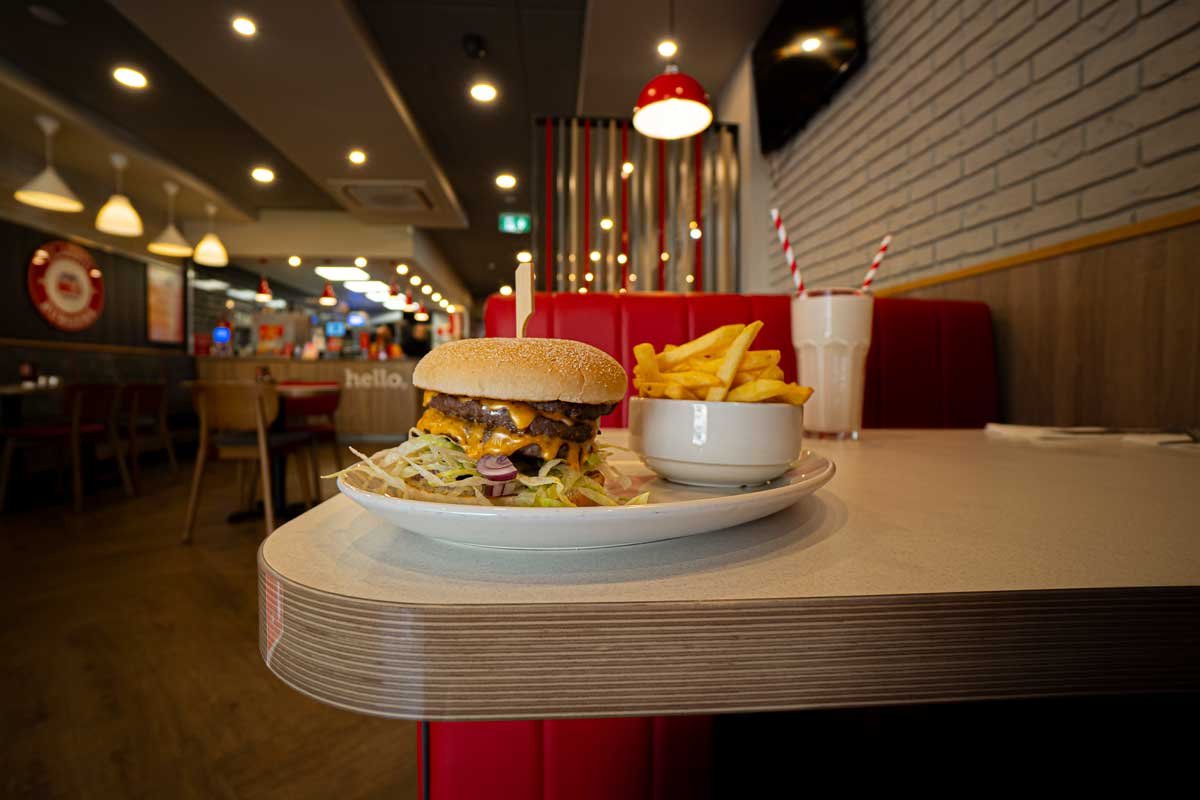
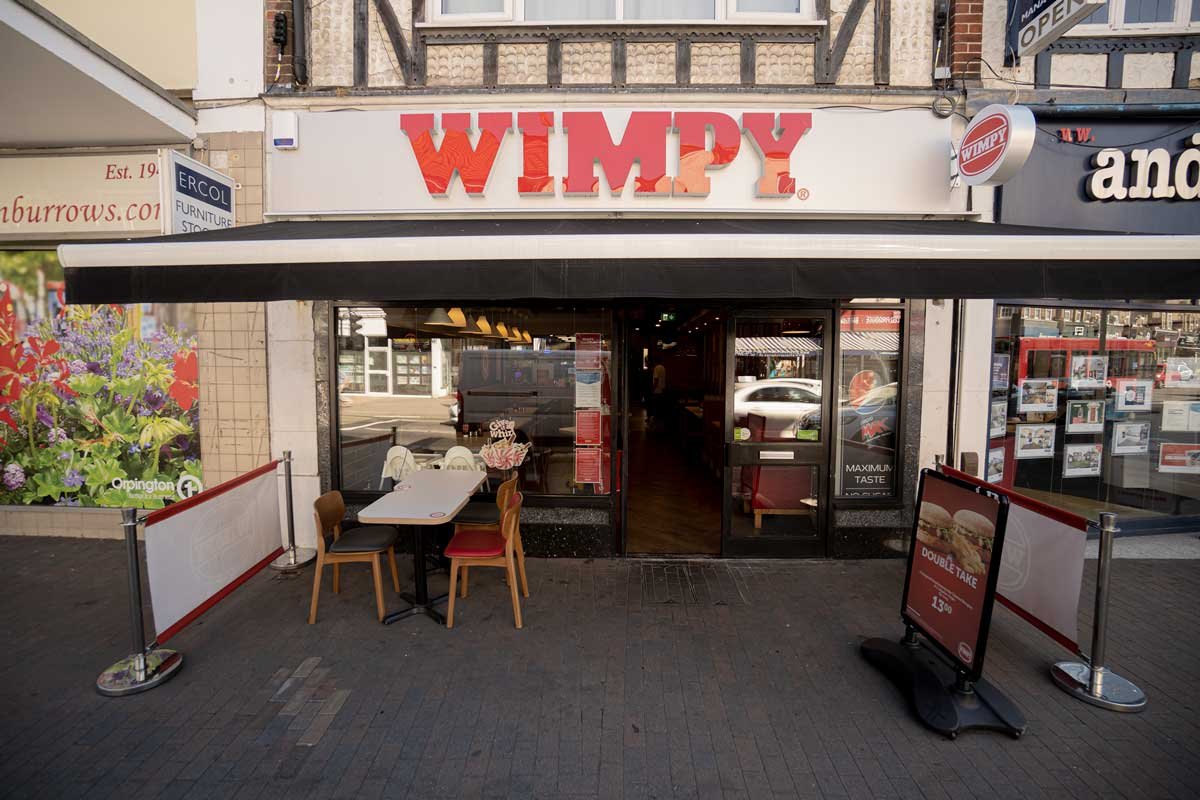
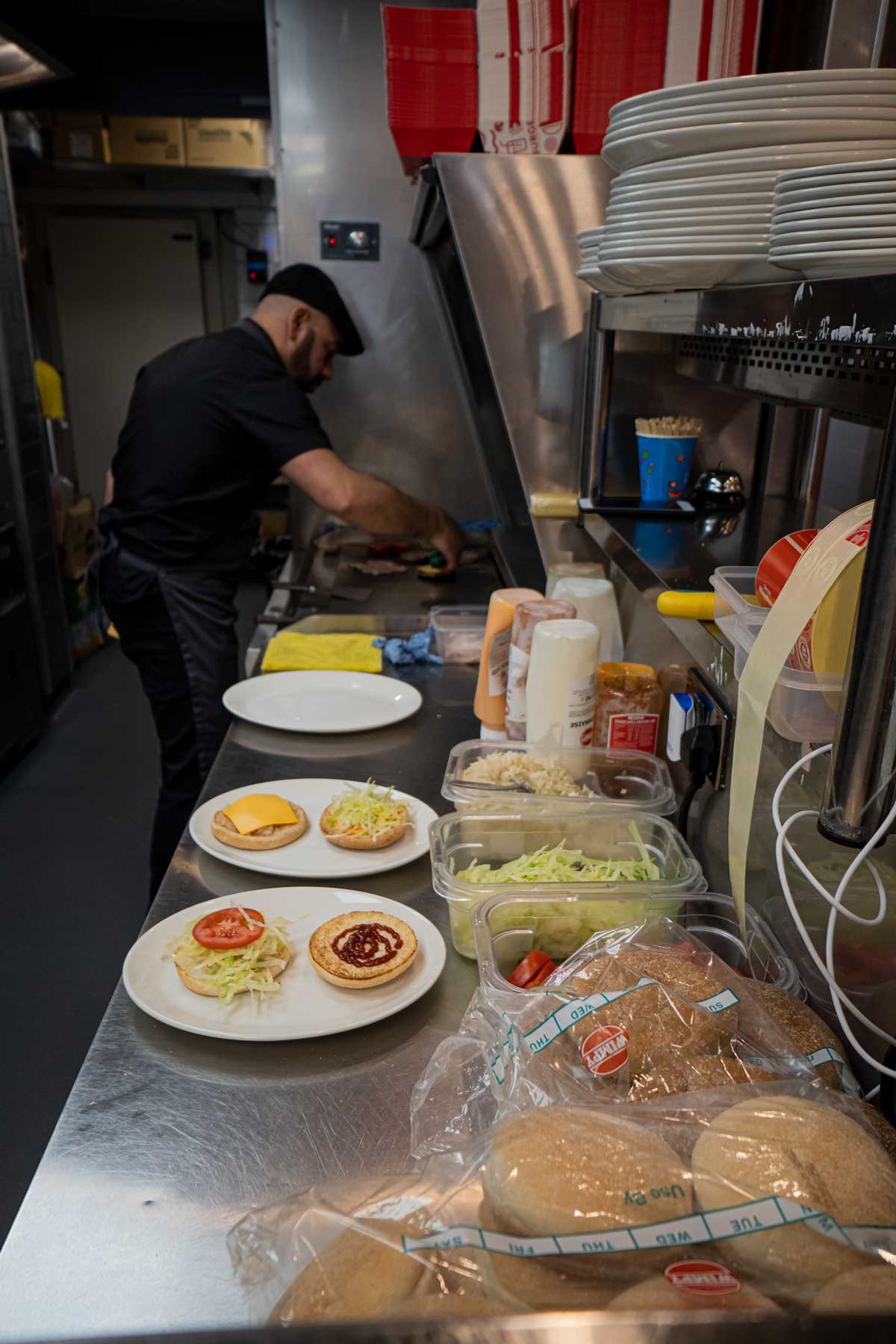
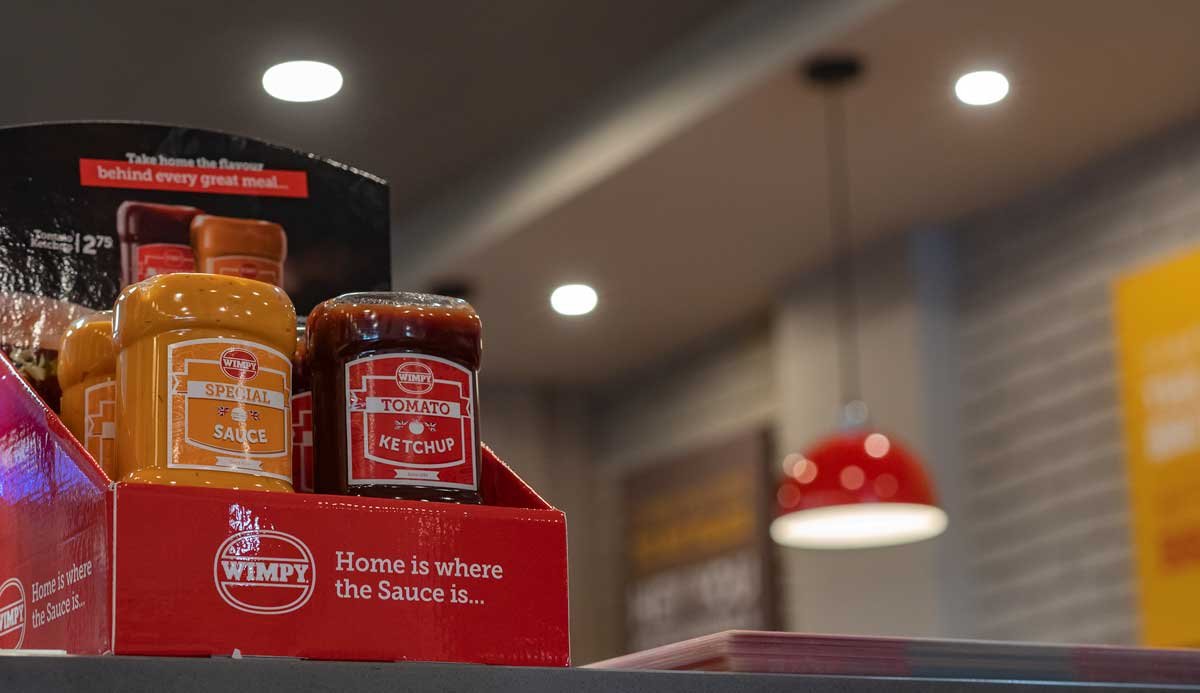
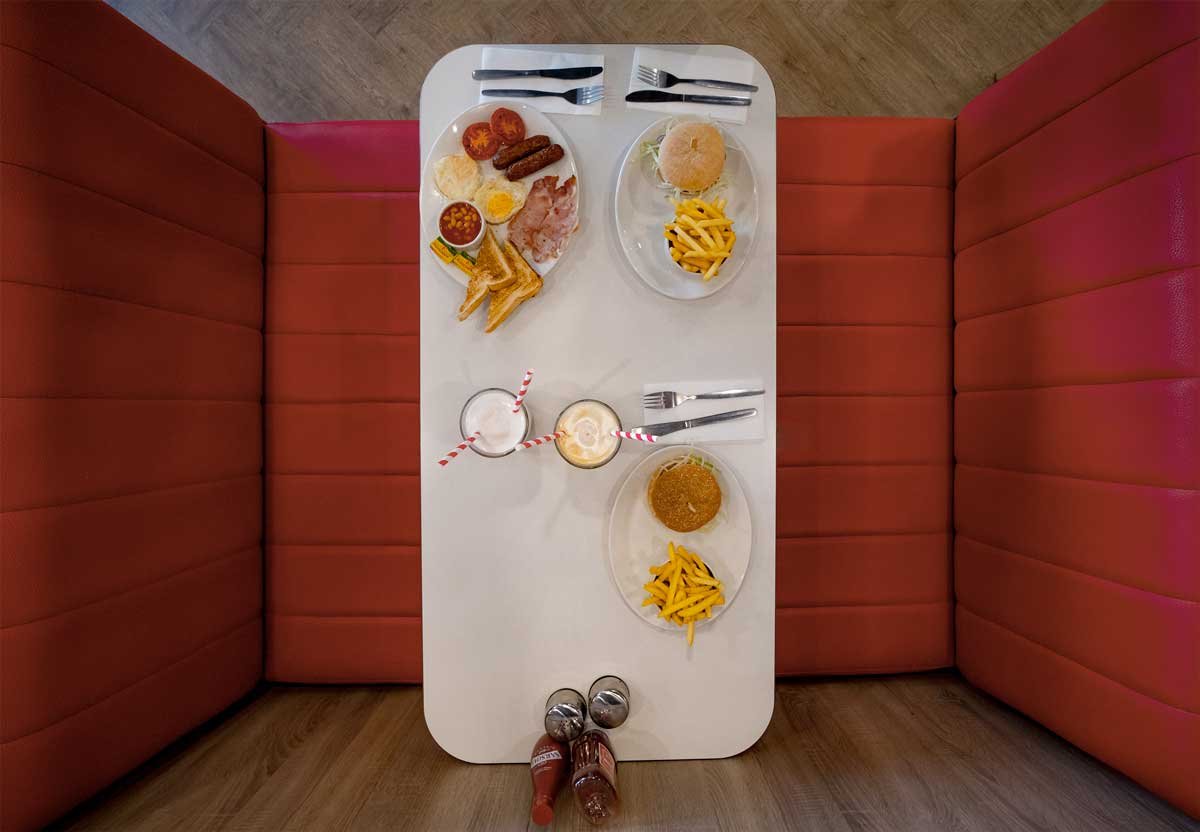
As a youngster I went to Wimpy in Faversham to sit down and enjoy their USPs of friendly table service and, of course, the knives and forks. Perhaps if I had been able to take it away at that time, I would have visited them rather than that smirking clown or the golden crown.
“Delivery is not a part of a market that we can ignore,” says Chris. “We actually launched home delivery in 2017 and we’ve rolled out onto all the main platforms – Deliveroo, Uber Eats and Just Eat. That has been very successful in making us more accessible.”
Every one of us has seen a McDonald’s box or bag either in a bin or, regrettably, blowing down the street only to realise that there’s not a restaurant for 20 miles. Perhaps that is the sad mark of a successful business. Nonetheless, takeaway is fast becoming the name of the game.
We’ve seen new customers and a younger audience through it,” says Chris. “Delivery now and through Covid was a very significant part of our business – through the dedication and absolute commitment of our franchisees when all they were allowed to open for was delivery and takeaway.
“Perhaps if I had been able to take it away at that time, I would have visited them rather than that smirking clown or the golden crown”
“However, it does always depend on where they are located as to whether there is a delivery operator in that area. We have 80% on at least one platform.”
Last year, Wimpy returned to Orpington after a gap of 40 years with a new franchise opening and on our visit it was nice to experience the brand for the first time in probably 20 years. There’s still something quite appealing to having the sit-down experience and while it won’t be going for any Michelin stars the difference in having a burger grilled to order rather than pinged in a glorified microwave is agreeable.
The new menu is very similar to the menu people will remember and, yes, the bender is still there, as is the Special Sauce. But now there are the expected alternatives and vegan options.
“There are certain things we had to do with the menu,” says Chris. “In late 2020 we actually trialled a vegan burger and it was so successful that the trial did not stop – it carried on. That vegan burger is now a mainline menu item. We have to keep abreast of trends so that we make sure our customer base is provided for.”
There are non-meat alternatives like the southern-fried crumbed Quorn burger and the spicy bean burger – though we are led to believe the spicy bean burger has been on the menu since the 80s, so perhaps the Wimpy was a trendsetter after all.
Probably the most interesting part of the Wimpy model is also the most baffling – its locations. While its fast-food rivals move out to business parks and motorway service stations, the Wimpy stays in the inevitably more expensive high streets.
“The majority of our sites are high street-based,” says Chris. “And the continued plan of expansion is high street-based.”
And while Wimpy doesn’t take space in Oxford Street – though it used to – being at the centre of a busy community is very much part of the MO.
“There isn’t a ‘one size fits all’. We are known for that community feel. We’re not just another restaurant on the high street. We have a good base of regular customers and we have an emerging base of younger customers in those locations where we’ve had the Shift design and reopened. We know where we do well and our concentration will be on those.”
In South Africa, where there are more than 500 Wimpy outlets, the brand is known as a breakfast place and to a certain extent I see what they’re getting at. It has a quick scran, cafe feel to it, but it also has the enviable burger-slinging history that those faux-American diners that pop up from time to time are desperate to capture.
This is no deep-fried battle cry to head back to the booths in droves, but I am intrigued to see what Wimpy does next.
*(Chatham, Strood, Maidstone, Sittingbourne, Ashford, Dartford, Bexleyheath, Orpington, Beckenham, Bromley and Welling)

